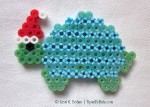Did you know that the American Academy of Pediatrics recommends that parents limit children’s total entertainment media time to no more than 1 to 2 hours of quality programming per day? Did you know that it also discourages all television viewing for children younger than 2 years?
As a parent, do you know how much screen time your child is getting over the course of a typical day in child care? Do you know what your child is watching?
As a child care provider, can you legitimately assure the parents of the children in your care that the television is not on for more than 30 minutes a day? If so, have you considered using that as a marketing tool for recruiting new clients?
According to the American Academy of Pediatrics, television viewing in child care settings may double the total amount of TV time for young children, with those in home-based settings watching significantly more on an average day than those in center-based care.
The study, “Preschool-Aged Children’s Television Viewing in Child Care Settings,” published in the December 2009 issue of Pediatrics, looked at television use in 168 child care programs in four states. The researchers found that among preschool-aged children, those in home-based care watched TV for 2.4 hours on an average day, compared to 0.4 hours in center-based settings. Some home-based programs were closer to the center-based programs in the amount of time they used television, particularly in those programs in which the staff had college degrees.
Previous estimates of children’s screen time have relied only on parents’ reports of viewing in the home, yet the majority of preschool-aged children are cared for by someone other than parents. The authors concluded that TV viewing in day care could double the total amount of screen time for children when compared to their screen time at home.
This is the most current study of TV viewing in day care settings; previous data on screen time in child care are 20 years old, and do not reflect modern factors that affect media use among children in these settings.
Source: http://www.aap.org/advocacy/releases/nov2309studies.htm
© Liesl K. Bohan | TipsnTidbits.com


























